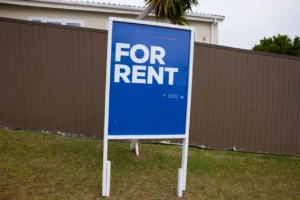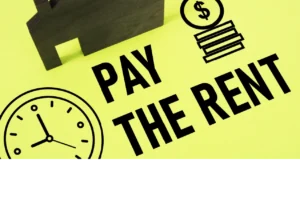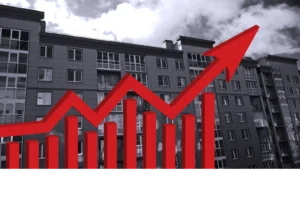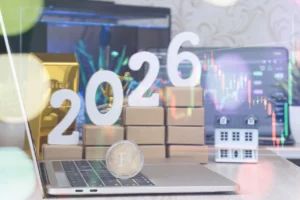5 Important Lessons Landlords Learned During the Pandemic
 The COVID-19 pandemic has been a learning experience for everyone.
The COVID-19 pandemic has been a learning experience for everyone.
Nowhere was this more evident than in the relationship between landlords and their tenants. Often at odds with each other, they soon realized that a new spirit of cooperation was necessary. As the government established eviction moratoriums and assistance programs, landlords tended to think of the rental aid packages as something that would only help the tenant. But they soon learned that they were in this together. Landlords wanted to retain their tenants and renters wanted to keep their homes.
According to the Harvard Joint Center for Housing Studies (JCHS), over half of renters who work in hard-hit industries live in single-family and small multifamily rentals. Three-quarters of these rental properties are owned by individual “mom and pop” investors – folks with their own bills to pay.
1. How to work together for a common goal
In a recent AAOA survey, one landlord said, “I learned how much impact a few months income can have on a landlord or tenant’s ability to maintain bill payments. It doesn’t take long to get behind in a big way.”
As the pandemic wore on, unemployment figures rose, making it more and more difficult for tenants to pay their rents. In turn, landlords began to worry about paying their mortgages. They learned that they needed to communicate with their tenants to see how the pandemic was impacting them and how they could work together to achieve their common goal.
Where tenants can apply for aid, they often need help from landlords to complete the application process. Some emergency rental assistance programs have conditions requiring landlords to waive late fees, forgive a portion of the rent or agree not to evict because of nonpayment in the months that rent is covered. Recognizing the challenges that we all face has helped landlords and tenants to work more collaboratively than ever.
2. How to get creative to survive
Landlords and management companies began having conversations with tenants to create plans to help them stay in their homes. Due dates were changed to better align with the tenant’s payday and/or split into multiple payments over the month. Late fees and interest were forgiven, rents were lowered and repayment plans were created.
Desperate to get people in the door, landlords, many with mortgages on the properties they rent out, began offering months of free rent, free gym memberships and hundreds of dollars in gift cards to new renters.
3. How to maintain a good landlord-tenant relationship
Many landlords and property managers get a signed contract and a security deposit and don’t speak with their tenants again until it’s time to renew the lease. But the pandemic and its unique circumstances brought the need for more personal interaction.
Since renters were spending more time at home, they became very aware of any problem areas in their homes–and they wanted them fixed. Tenants learned to speak up and landlords were obliged to respond in a positive manner. With all of the difficulties that landlords were having during the pandemic, they quickly realized how important it was to keep paying tenants happy.
Although it seems obvious, keeping a good tenant really begins with signing a good tenant and signing a trustworthy tenant begins with a thorough background check, including a comprehensive credit report. As one of AAOA’s survey respondents said, “Be pro-active and thoroughly vet all incoming new residents. That has helped us to weather the pandemic as none of our tenants missed their rent payments.”
David of New Jersey (7 units) agrees, “Think three times before accepting a renter with good, but not adequate, credit history. Those are the ones that became problems during the pandemic.”
4. How to protect tenants’ health during COVID
Landlords learned that protecting the health of their tenants was not just a necessary precaution but also a message to the renters that management cared about them personally. Hand sanitizer stations, wellness check-in calls, personal protective equipment and monitoring COVID-19 cases among residents helped to reduce community spread.
Property managers and developers like Jonathan Rose Companies, a New York-based urban planner and real estate developer, and L+M Development Partners, an innovator in developing quality affordable, mixed-income and market-rate housing, provided weekly printed bulletins, facilitated virtual resident meetings and identified opportunities to improve connectivity.
5. How to appreciate tenants more
The AAOA landlord survey showed that many property owners have a newfound appreciation for their tenants. Many responded by saying, “I learned to be grateful for the tenants I have. I also learned that it does pay to have treated and continue to treat my tenants fairly.” And, “How lucky I am! I did not get sick and both tenants paid on time.”
Angie of California (14 units) learned “to be reassuring to tenants and give positive feedback to the tenants that keep trying to do the right thing. The majority of our tenants,” she said, “have communicated and been very responsible during the pandemic. I was pleasantly surprised.”
Landlords who learned how to take care of their current tenants will be glad they did as the renter pool after the eviction moratorium ends will be filled with questionable applicants. Retaining reliable tenants might mean doing some upgrades or discounting the rent for a period of time, but it will pay off in the end.
Once the pandemic is a memory, landlords should not forget how to treat their tenants with understanding nor should they return to an adversarial relationship. Hopefully, landlords now understand the need to take a more bilateral approach to their tenant relationships, making the process of paying rent as painless as possible for everyone.













 Accessibility
Accessibility